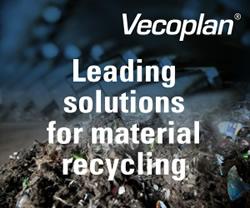Jack Short is the Secretary General of the International Transport Forum. He is also the Director of the Joint OECD/ITF Transport Research Centre, which was set up in 2004. He joined the ECMT in 1984 and was Deputy Secretary General from 1993 to 2001, when he became Secretary General. Previously he worked for the Ministries of Transport and Finance in Ireland, as well as in transport research.
Carbon Emissions and Energy Issue in the Transport Sector
Jack Short | International Transport Forum
 What short-term and long-term trends do you see in global CO2 emissions from transport activity?
What short-term and long-term trends do you see in global CO2 emissions from transport activity?
The crisis has depressed transport flows, in particular freight, and there were concomitant effects on emissions. In the US in particular, the combined effects of the 2008 oil price spike and the 2008-2010 recession led to a sharp drop in transport emissions, but the same happened in all OECD economies. But emissions have again started to pick up due increased demand for transport as the OECD economies recover and because of robust growth in transport emissions from emerging economies like India and China. Emissions from air traffic will rise fastest, followed by maritime. But emissions from road transport will still account for the biggest part of transport emissions for decades to come. If we want to even stabilize emissions from road traffic, fuel consumption would need to be halved by 2050. And to achieve this, some forceful policies will have to be implemented now.
What role does the International Transport Forum (ITF) play in addressing the transport sector’s environmental impact?
Mobility is a key factor in economic development and growth. Transport contributes to employment, social welfare and cohesion - but it clearly also has negative environmental impacts. The International Transport Forum was created to help develop policies that address the strategic challenges of transport, such as making it sustainable. We are the platform for 52 countries around the globe to address such issues, and we provide them with input to that end - we have only just published a study with trends in transport greenhouse gas emissions, for example.
Where is innovation needed to help transport reduce its carbon emissions and energy use, and what innovations are most important?
We must think of innovation in a much broader sense than just in terms of technological improvement. We also need innovative policy approaches, and new ways of implementing innovation. Of course, technology is important, as well, and here we ought to move ahead on both fronts simultaneously: improving conventional technology like the internal combustion engine - this is where the most promising cost-effective emission reductions can take place. And we need to begin decarbonising transport, which is still 97 per cent dependent on fossil fuels. A few years ago, biofuels were all the rage, but that has somewhat faded. Right now its electric mobility, which has promise – batteries are getting better, range is increasing price difference is narrowing. But it is no cure-all either, since electricity production can be more carbon-intensive than gasoline in some regions, such as the US and China. But electricity and fuel cells remain expensive, and certainly more expensive than hybrid technology. The upshot is that there is no silver bullet, and if we want to be serious about cutting emissions, we will have to try many things at the same time.
How will these innovations be adopted in real world products?
At the end of the day, that is the key issue. The challenge is not so much coming up with new technology, but bringing it to the market. At present, consumers on both sides of the Atlantic do not buy engines that reach the efficiency levels that will enable us to meet greenhouse gas abatement targets. And why don’t they? People don’t like being asked to put money up front for later energy savings, even if the evidence suggests they will save money over the lifetime of a fuel efficient car. Energy is still too cheap, and fuel efficiency standards are not sufficiently strict. If the political imperative is to decarbonise, some form of carbon pricing and the setting of tough standards will be necessary. Only a combination of both will stimulate the take-up of efficiency-improving innovations.
What alternative options for energy supply exist and are there any recent innovations in transport technology showcased at this year’s Forum that might help decrease global emission rates?
Many think the future is electric. If that is so, low carbon power production becomes crucial – solar power, wind and others. Carbon capture and sequestration are mentioned as answers but remain highly uncertain. A new debate on nuclear energy is just beginning. Hydrogen shows some long-term potential, but it is too costly in most applications. Biofuels, especially second generation cellulosic biofuels, show some promise, but great uncertainty remains regarding the overall environmental impact of their production. So in the short term, we need to focus on making more efficient what we are using today. In our estimate, CO2 emissions from global car and light truck emissions could be stabilized at 2005 levels with a 50 per cent improvement in average new vehicle fuel economy by 2030. And we think that this is possible with optimized internal combustion engines and hybrid technologies.
How can alternative energy technologies be promoted? What is the role for private and public stakeholders?
I think we need a dual-track approach. Policy-makers should set long-term, evolving fuel economy standards to help industry guide investment. And they ought to introduce robust and predictable carbon pricing to guide consumer choices towards low carbon alternatives. Ideally, only the second would be necessary, but there is compelling evidence that pricing might not be sufficient to guide industry investment in low-carbon tech due to uncertainty about consumer behavior.
Do you think it will take continued government subsidies to make progress in adoption of alternative energy technology in transportation?
Alternative technologies start at a cost disadvantage. There are no economies of scale, and to buy established, conventional, working technology is appealing from a buyer’s point of view. So subsidies for a specific innovation can aid to break that glass ceiling for new technologies. The difficult part is to decide which innovation to subsidize and which not. If government sets its sights on the wrong innovation, more promising approaches may be stifled. So if a taxpayer's money is spent on fostering innovation, it should be an open ended subsidy, and not technology-specific.
The content & opinions in this article are the author’s and do not necessarily represent the views of AltEnergyMag
Comments (0)
This post does not have any comments. Be the first to leave a comment below.
Featured Product

